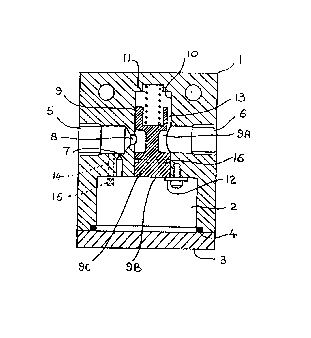Une partie des informations de ce site Web a été fournie par des sources externes. Le gouvernement du Canada n'assume aucune responsabilité concernant la précision, l'actualité ou la fiabilité des informations fournies par les sources externes. Les utilisateurs qui désirent employer cette information devraient consulter directement la source des informations. Le contenu fourni par les sources externes n'est pas assujetti aux exigences sur les langues officielles, la protection des renseignements personnels et l'accessibilité.
L'apparition de différences dans le texte et l'image des Revendications et de l'Abrégé dépend du moment auquel le document est publié. Les textes des Revendications et de l'Abrégé sont affichés :
| (12) Demande de brevet: | (11) CA 2055256 |
|---|---|
| (54) Titre français: | AGENCEMENT DE VANNES |
| (54) Titre anglais: | VALVE ARRANGEMENTS |
| Statut: | Réputée abandonnée et au-delà du délai pour le rétablissement - en attente de la réponse à l’avis de communication rejetée |
| (51) Classification internationale des brevets (CIB): |
|
|---|---|
| (72) Inventeurs : |
|
| (73) Titulaires : |
|
| (71) Demandeurs : |
|
| (74) Agent: | ROGERS & SCOTT |
| (74) Co-agent: | |
| (45) Délivré: | |
| (22) Date de dépôt: | 1991-11-12 |
| (41) Mise à la disponibilité du public: | 1992-05-27 |
| Licence disponible: | S.O. |
| Cédé au domaine public: | S.O. |
| (25) Langue des documents déposés: | Anglais |
| Traité de coopération en matière de brevets (PCT): | Non |
|---|
| (30) Données de priorité de la demande: | ||||||
|---|---|---|---|---|---|---|
|
ABSTRACT OF THE DISCLOSURE
A valve arrangement comprises an inlet port (?), an
outlet port (?), a valve member (?) normally adopting a
valve arrangement open position in which fluid flow from
the inlet port (?) to the outlet port (?) is permitted
via a choke (?), and a fluid chamber (?). The inlet port
(?) is connected via another choke (?) to supply fluid to
the fluid chamber (?) to urge the valve member (?) to a
valve arrangement closed position. The two chokes (?
?) determine that upon flow of fluid from the inlet port
(?) to the outlet port (?) the fluid pressure in the
fluid chamber (?) tends to rise more slowly than the
fluid pressure at the outlet port (?) and so the valve
member (?) is urged to remain in the valve arrangement
open position by the effect of the fluid pressure at the
outlet port (?). If this fluid pressure is insufficient,
either because of an existing rupture downstream of the
valve arrangement or because such a rupture occurs, the
fluid pressure in the fluid chamber (?) asserts itself to
move the valve member (?) to the valve arrangement closed
position.
Note : Les revendications sont présentées dans la langue officielle dans laquelle elles ont été soumises.
Note : Les descriptions sont présentées dans la langue officielle dans laquelle elles ont été soumises.

2024-08-01 : Dans le cadre de la transition vers les Brevets de nouvelle génération (BNG), la base de données sur les brevets canadiens (BDBC) contient désormais un Historique d'événement plus détaillé, qui reproduit le Journal des événements de notre nouvelle solution interne.
Veuillez noter que les événements débutant par « Inactive : » se réfèrent à des événements qui ne sont plus utilisés dans notre nouvelle solution interne.
Pour une meilleure compréhension de l'état de la demande ou brevet qui figure sur cette page, la rubrique Mise en garde , et les descriptions de Brevet , Historique d'événement , Taxes périodiques et Historique des paiements devraient être consultées.
| Description | Date |
|---|---|
| Inactive : CIB de MCD | 2006-03-11 |
| Le délai pour l'annulation est expiré | 1994-05-14 |
| Demande non rétablie avant l'échéance | 1994-05-14 |
| Réputée abandonnée - omission de répondre à un avis sur les taxes pour le maintien en état | 1993-11-12 |
| Inactive : Demande ad hoc documentée | 1993-11-12 |
| Demande publiée (accessible au public) | 1992-05-27 |
| Date d'abandonnement | Raison | Date de rétablissement |
|---|---|---|
| 1993-11-12 |
Les titulaires actuels et antérieures au dossier sont affichés en ordre alphabétique.
| Titulaires actuels au dossier |
|---|
| WESTINGHOUSE BRAKE AND SIGNAL HOLDINGS LIMITED |
| Titulaires antérieures au dossier |
|---|
| KEITH W. LANGLEY |